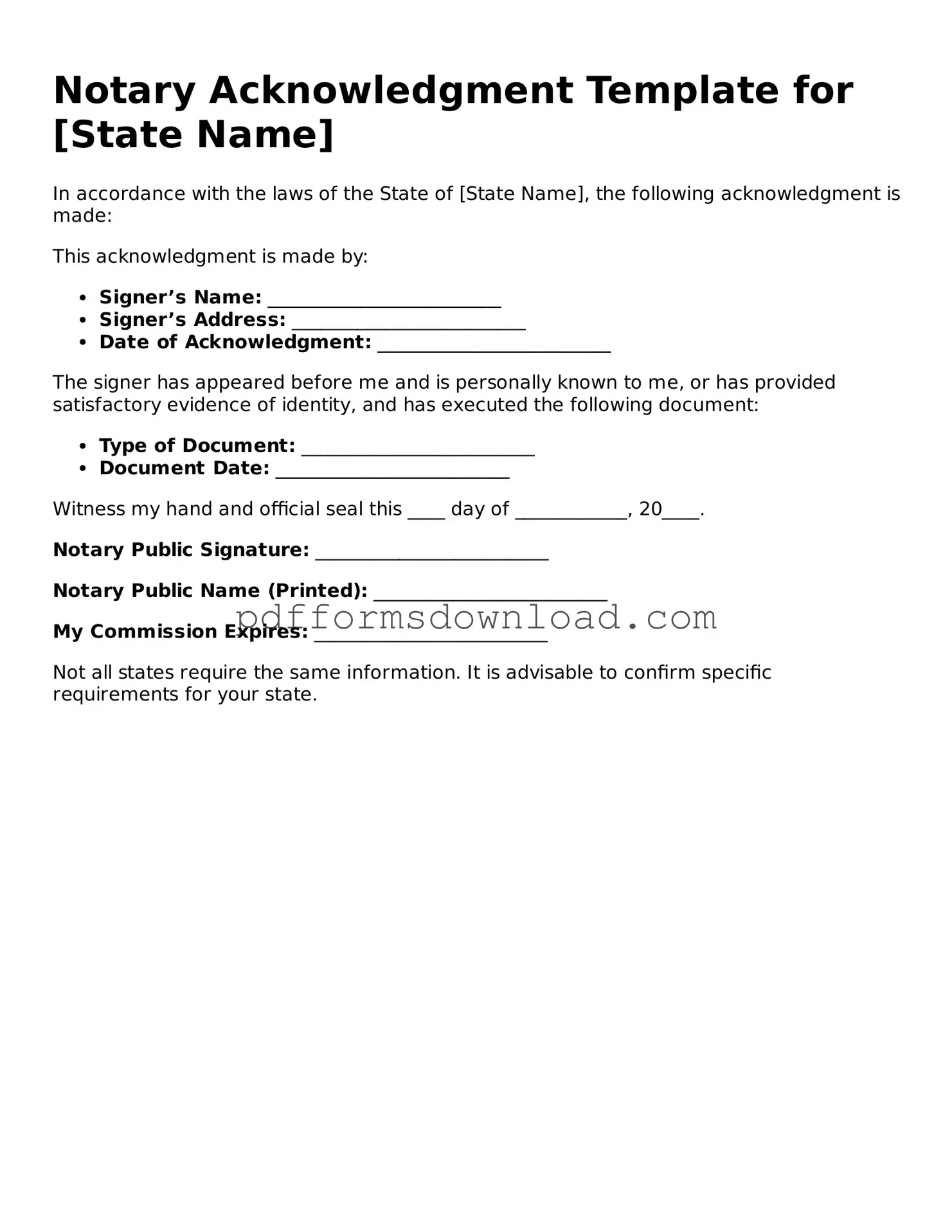What is a Notary Acknowledgement form?
A Notary Acknowledgement form is a document that verifies the identity of a person signing a legal document. It confirms that the signer appeared before a notary public and acknowledged that they signed the document willingly. This form is often used for important documents like contracts, deeds, and affidavits to ensure their authenticity and legality.
Why do I need a Notary Acknowledgement?
You need a Notary Acknowledgement to provide assurance that the signatures on your document are genuine. This can help prevent fraud and disputes in the future. Many institutions, including banks and courts, require notarized documents to be considered valid. By having a notary acknowledge your signature, you add an extra layer of protection and credibility to your paperwork.
How do I get a Notary Acknowledgement?
To obtain a Notary Acknowledgement, you must first find a notary public. Many banks, law offices, and shipping centers offer notary services. Once you locate a notary, you’ll need to bring the document you want to sign. Make sure to sign it in front of the notary. They will then complete the Notary Acknowledgement form, which includes their signature and seal, confirming that they witnessed your signing.
Is there a fee for a Notary Acknowledgement?
Yes, there is typically a fee for notary services, which can vary depending on the state and the notary's policies. Some notaries charge a flat rate, while others may have different fees based on the type of document or the number of signatures required. It’s a good idea to ask about the cost upfront, so you know what to expect.
